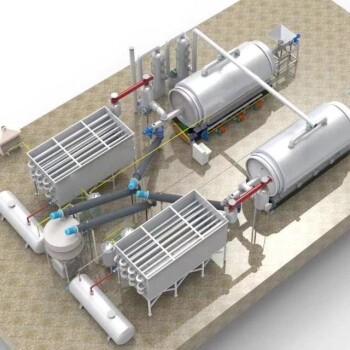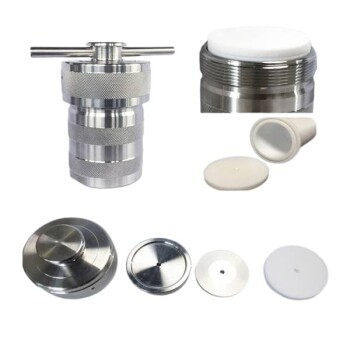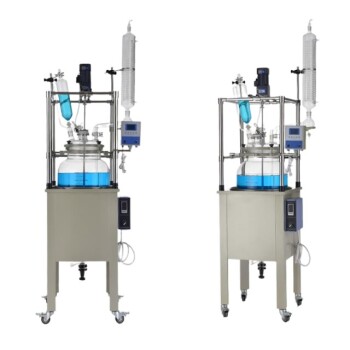The yield of a pyrolysis plant depends on several factors, including the type of feedstock (plastic or biomass), its composition, and the operating conditions such as temperature, heating rate, and residence time. For plastic pyrolysis, typical yields are 50-80% pyrolysis oil, 20-35% pyrolysis gas, and 3-30% residue. For biomass pyrolysis, typical yields are around 60% bio-oil, 20% biochar, and 20% syngas, though slow pyrolysis can produce up to 50% char. The yield and quality of products are influenced by feedstock properties like moisture content, fixed carbon, and volatile matter, as well as process parameters like temperature and gas residence time. Optimizing these factors can help achieve desired product distributions efficiently.
Key Points Explained:

-
Yield Variability Based on Feedstock Type
- The yield of pyrolysis products varies significantly depending on whether the feedstock is plastic or biomass.
- For plastic pyrolysis, the yield typically ranges from:
- 50-80% pyrolysis oil
- 20-35% pyrolysis gas
- 3-30% residue
- For biomass pyrolysis, the yield typically ranges from:
- 60% bio-oil
- 20% biochar
- 20% syngas
- For plastic pyrolysis, the yield typically ranges from:
- Slow pyrolysis of biomass can produce higher char yields (up to 50%).
- The yield of pyrolysis products varies significantly depending on whether the feedstock is plastic or biomass.
-
Influence of Feedstock Composition
- The composition of the feedstock plays a critical role in determining the yield and quality of pyrolysis products.
- For plastic waste, factors such as the type of plastic, its cleanliness, and the presence of impurities (e.g., ash, soil) significantly affect the yield. Pure, dry, and clean plastic generally yields more pyrolysis products.
- For biomass, properties like moisture content, fixed carbon, and volatile matter influence product distribution.
- The composition of the feedstock plays a critical role in determining the yield and quality of pyrolysis products.
-
Impact of Operating Conditions
- The yield and quality of pyrolysis products are highly dependent on process parameters such as temperature, heating rate, and residence time.
-
Temperature:
- Higher temperatures favor the production of syngas by promoting tar decomposition and thermal cracking.
- Lower temperatures favor the production of char.
-
Heating Rate:
- High heating rates and short gas residence times favor liquid product (oil) formation.
- Low heating rates and long gas residence times favor gas production.
-
Residence Time:
- Longer residence times at high temperatures increase gas yields.
- Shorter residence times at moderate temperatures increase oil yields.
-
Temperature:
- The yield and quality of pyrolysis products are highly dependent on process parameters such as temperature, heating rate, and residence time.
-
Optimization for Desired Products
- To achieve specific product distributions, the pyrolysis process can be optimized by adjusting operating conditions:
-
For Char Production:
- Use low temperatures and low heating rates.
-
For Liquid Products (Oil):
- Use moderate temperatures, high heating rates, and short gas residence times.
-
For Gas Production:
- Use high temperatures, low heating rates, and long gas residence times.
-
For Char Production:
- To achieve specific product distributions, the pyrolysis process can be optimized by adjusting operating conditions:
-
Feedstock Quality and Technology
- The quality of the feedstock and the pyrolysis technology used are critical factors in determining yield.
- For plastic pyrolysis, the yield is higher when the feedstock is pure, dry, and free from contaminants.
- Advanced pyrolysis technologies can improve yield and product quality by optimizing process conditions and handling feedstock more efficiently.
- The quality of the feedstock and the pyrolysis technology used are critical factors in determining yield.
-
Practical Considerations for Plant Operators
- Plant operators must consider the following to maximize yield and efficiency:
- Select feedstock with optimal properties (e.g., low moisture, high volatile matter for biomass; clean, dry plastic for plastic pyrolysis).
- Adjust operating conditions (temperature, heating rate, residence time) based on the desired product distribution.
- Use appropriate pyrolysis technology to match the feedstock and product goals.
- Plant operators must consider the following to maximize yield and efficiency:
By understanding these factors and optimizing the process, pyrolysis plant operators can achieve higher yields and better-quality products tailored to their specific needs.
Summary Table:
| Factor | Impact on Yield |
|---|---|
| Feedstock Type | Plastic: 50-80% oil, 20-35% gas, 3-30% residue. Biomass: 60% oil, 20% char, 20% gas. |
| Feedstock Composition | Clean, dry plastic yields more. Biomass moisture, fixed carbon, and volatile matter matter. |
| Operating Conditions | Temperature, heating rate, and residence time dictate product distribution. |
| Optimization | Adjust conditions for desired outputs: char, oil, or gas. |
Ready to optimize your pyrolysis plant yield? Contact our experts today for tailored solutions!



















